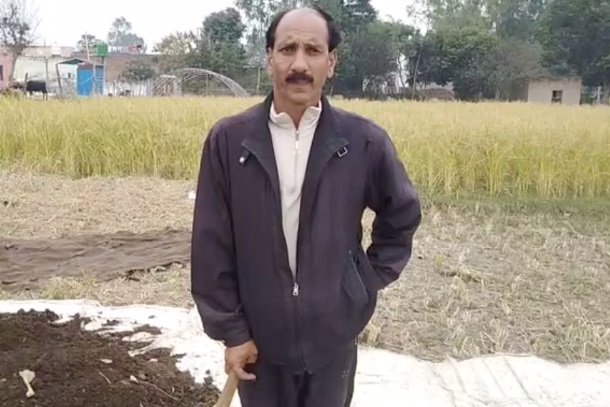- 0191 - 2481222, 2480139
- director@csssjk.org
Alternative farming helps poor fight climate change in Kashmir
Catholic Social service Society helps small-time farmers take up alternative methods to escape debt
This year, after a long time, Vinod Kumar bought new livestock, repaired his single-story house and painted its exterior with a sky blue tint — all because he switched to alternative farming methods a year ago.
Despite more than 20 years of hard work, the 42-year-old failed to generate enough income from his seven acres of fertile land in the Sandhi area of Jammu in the federally ruled Jammu and Kashmir territory in the northernmost part of India.
Unseasonal rains and changing weather patterns often ruined his maize and rice crops. Strong winds and thunderstorms sometimes thrashed his crops, while the late arrival of monsoon rains spelled disaster for his farm. For example, he says, two years ago, after four months of hard work to cultivate rice, all he could earn was 2,000 rupees (about US$30)."Those were hard days. I do not even want to recall them. My family was struggling even to meet its basic needs," says Kumar.
However, things began to change for him in 2018 when a team from Jammu-Srinagar Diocese surveyed his area and suggested Kumar move to alternative farming methods. The team was part of the diocesan social service wing known as the Catholic Social Service Society (CSSS).
Subash Kumar, a member of the church agency's resource team, said the struggling framer was given a month-long training course on the cultivation of mushrooms, marigold flowers and strawberries with the help of the government's Krishi Vigyan Kendra (center for farm education).
It helped Kumar get a certificate and some government funds to start his mushroom unit and cultivate marigolds.
The church agency works to identify places where the government must act and then facilitates and organizes people to ensure their advancement, Subhash said.
Kumar says he was "dazzled" to see the high acceptability of his produce in the market.
"The marigold flowers are widely being used in Hindu temples and on Hindu weddings. I saw dealers readily accepting strawberries at the price that I would fix. The mushrooms also fetch me a very decent and constant income," Kumar told ucanews.
Kumar now earns some 70,000 rupees (US$1,000) a month. His improved income helped him buy two cows and a calf. He also repaired his house and painted it with a sky blue color.
"It was my dream since childhood that my house should match the color of the summer sky," Kumar says.
He wants his two children — a boy and a girl — to take up farming after their university studies instead of hunting for a job. "Do farming, work hard and earn a decent living," he says.
According to Father Shaiju Chacko, director of the CSSS, the livelihood generation program focuses specifically on providing sustainable livelihoods through capacity building.
It trains people in soil health and fertility management, water management, crop management, plant protection, kitchen gardens, horticultural nurseries, and vegetable and fruit production.
"We have been successful in helping more than 2,409 farmers and setting up 35 well-functioning farmers' collectives," Father Chacko says.
They have also constructed more than 20 vermicompost pits in various areas to provide farmers with avenues for organic farming.
Narinder Pal, a farmer in the RS Pura area of Jammu who switched to mushroom cultivation a year ago, is all praise for alternative farming practices.
Like Vinod Kumar, he was contacted by the church agency's resource team and offered training to start his own mushroom unit.
"I used to cultivate basmati rice in my field but the costs of cultivation became more than my earnings. We had no option but to keep sticking to the same old practices. Now, thankfully, we have a profitable alternative," Narinder told ucanews.
All it involves, he says, is a room with vermicompost. "You will get your yield without much handwork."
published in UCAnews.com>>
https://www.ucanews.com/news/alternative-farming-helps-poor-fight-climate-change-in-kashmir/86775

